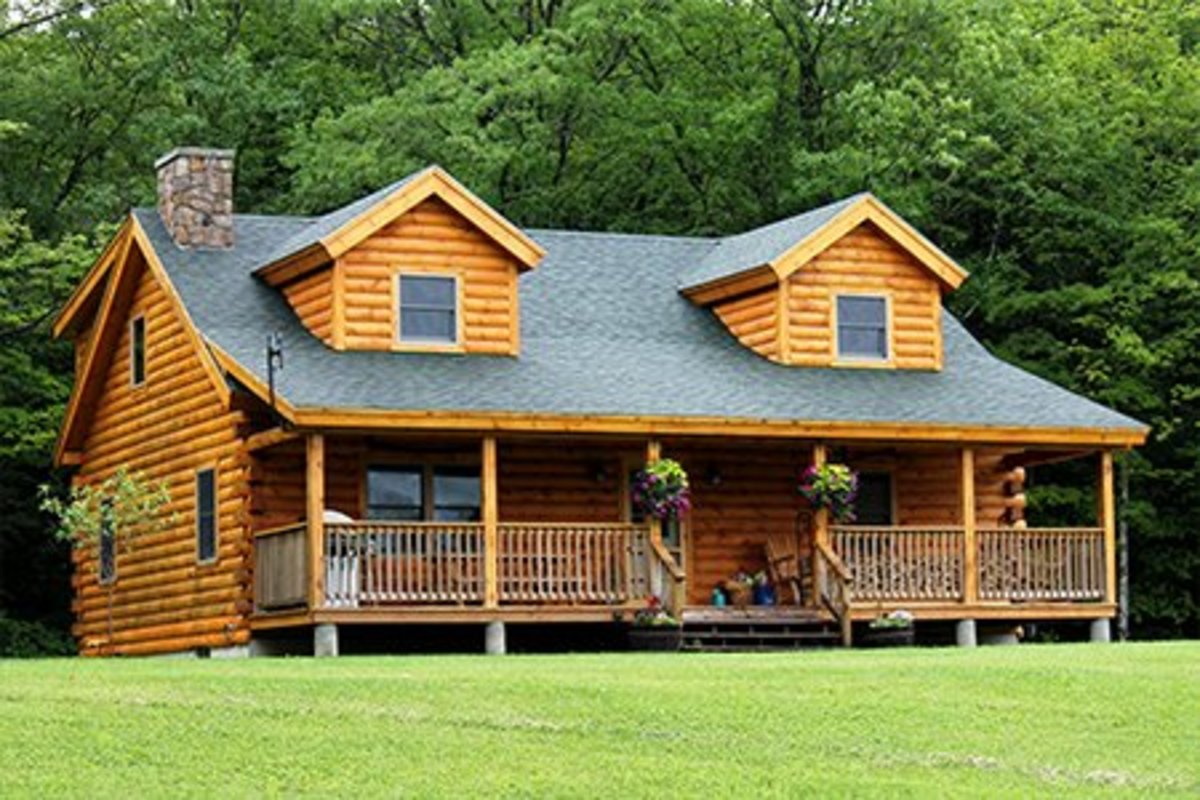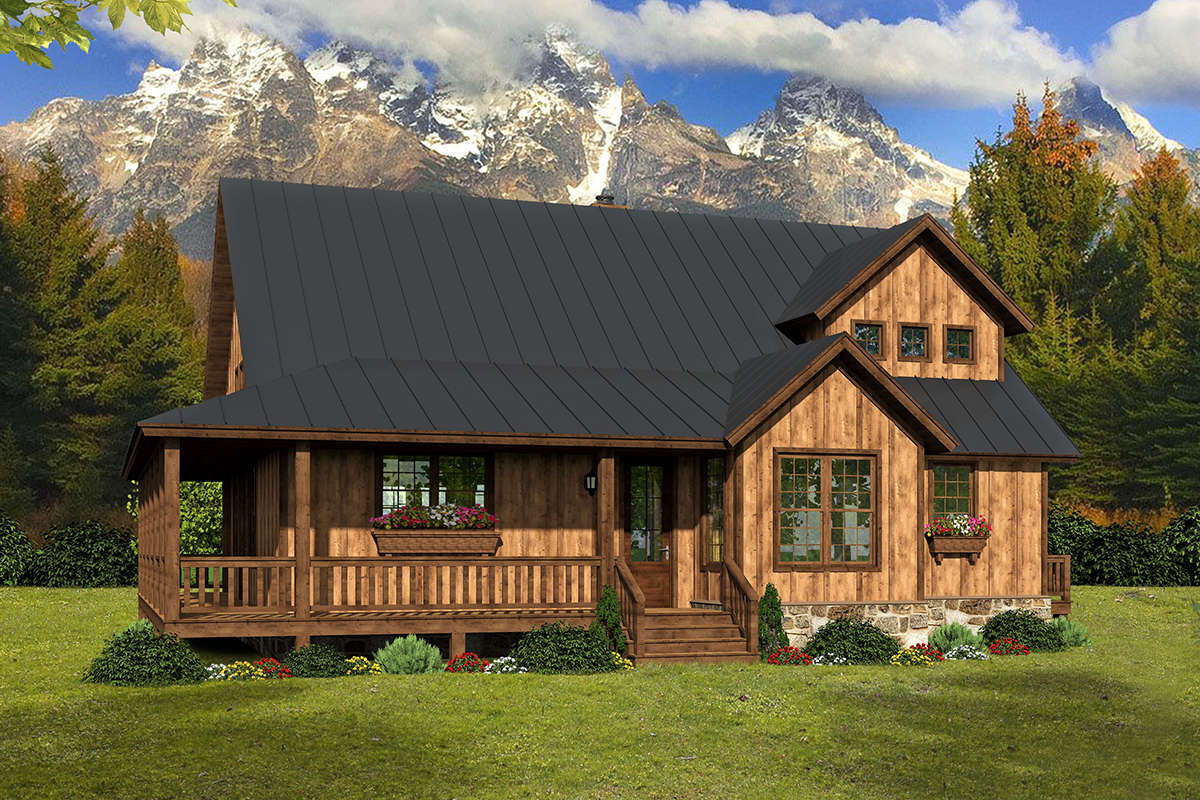The Appeal of a 3-Bedroom Log Cabin: 3 Bedroom Log Cabin

A 3-bedroom log cabin offers a unique blend of rustic charm, historical significance, and modern comfort, making it an appealing choice for those seeking a tranquil and distinctive living space.
The Historical and Cultural Significance of Log Cabins
Log cabins hold a significant place in American history and culture, representing a symbol of early settlers’ resourcefulness and resilience. Their origins can be traced back to European traditions, where they were constructed as practical and durable dwellings. In the 18th and 19th centuries, log cabins played a vital role in the westward expansion of the United States, serving as homes for pioneers and families seeking new opportunities. They have since become synonymous with the American frontier spirit and a nostalgic reminder of simpler times.
Different Log Cabin Styles and Their Architectural Features
Log cabins come in a variety of styles, each with its own distinctive architectural features.
- Traditional Log Cabin: This style is characterized by its simple, rectangular design with a steep gable roof, often featuring a porch or veranda. The logs are typically stacked horizontally and secured with dovetail joints or chinking.
- Chalet Style: This style is inspired by the traditional mountain homes of Switzerland and features a steep, overhanging roof and exposed beams. It often includes a balcony or wraparound porch, offering panoramic views.
- Rustic Log Cabin: This style embraces a more natural and unpolished aesthetic, with rough-hewn logs and exposed beams. It often incorporates elements of nature, such as stone fireplaces and large windows to bring the outdoors in.
- Modern Log Cabin: This style combines the rustic charm of traditional log cabins with contemporary design elements. It features clean lines, open floor plans, and large windows to maximize natural light. Modern log cabins often incorporate sustainable building materials and energy-efficient features.
Advantages and Disadvantages of Living in a Log Cabin
Living in a log cabin offers both advantages and disadvantages compared to a traditional house.
- Advantages:
- Unique Charm and Character: Log cabins offer a distinctive and inviting ambiance, creating a warm and cozy atmosphere.
- Energy Efficiency: The thick walls of log cabins provide excellent insulation, reducing heating and cooling costs.
- Durability and Longevity: Log cabins are known for their durability and longevity, often lasting for generations.
- Low Maintenance: Log cabins require less maintenance than traditional homes, as the wood naturally resists pests and decay.
- Connection to Nature: Log cabins often blend seamlessly with their natural surroundings, providing a sense of peace and tranquility.
- Disadvantages:
- Higher Initial Cost: Log cabins can be more expensive to build than traditional homes, due to the specialized construction techniques and materials used.
- Limited Space: Log cabins are often smaller than traditional homes, which can be a drawback for larger families.
- Fire Risk: Log cabins are susceptible to fire, so it is essential to have a comprehensive fire safety plan in place.
- Maintenance: While log cabins require less maintenance than traditional homes, they still require regular care, such as sealing and staining the logs.
- Accessibility: Log cabins are often located in remote areas, which can make it difficult to access amenities and services.
Design and Construction Considerations

Building a log cabin is a unique and rewarding experience, offering a blend of rustic charm and modern comfort. It involves careful planning and consideration of various design and construction elements to ensure a durable and aesthetically pleasing structure.
Types of Logs Used in Log Cabin Construction
The type of log used in construction significantly influences the cabin’s appearance, durability, and cost. The most common types include:
- Round Logs: These are the traditional choice, offering a rustic and authentic look. Round logs are typically peeled and may be hand-hewn or milled to achieve a specific diameter and shape.
- D-Logs: D-logs are round logs that have been flattened on one side, creating a D-shaped profile. This shape provides a more stable and level surface for walls and ceilings.
- Square Logs: Square logs are milled to a consistent square shape, offering a more modern and refined look. They are typically easier to work with than round logs and provide a more consistent wall thickness.
- Engineered Logs: These logs are manufactured from wood composites or laminated wood, offering a consistent size, shape, and quality. They are often more expensive than natural logs but provide increased durability and resistance to warping and cracking.
Log Cabin Construction Methods
Log cabin construction involves various techniques for joining logs to create sturdy and weather-resistant walls. Common methods include:
- Dovetail: The dovetail method involves cutting interlocking notches in the ends of the logs, creating a strong and aesthetically pleasing joint.
- Saddle Notch: This method involves cutting a saddle-shaped notch in the top of one log and a corresponding notch in the bottom of the log above it. The saddle notch provides a secure connection that allows for some flexibility in the logs.
- Corner Post: This method uses a vertical post to connect the ends of the logs, providing a strong and stable corner. The corner post is typically made of a heavier timber and is often mortised into the logs.
Insulation and Energy Efficiency of Log Cabins
Log cabins are naturally well-insulated due to the inherent thermal properties of wood. However, additional insulation may be necessary to achieve optimal energy efficiency, especially in colder climates. Common insulation methods include:
- Blowing Insulation: This method involves blowing insulation material into the wall cavities between the logs.
- Spray Foam Insulation: Spray foam insulation is a liquid that expands and hardens, creating a continuous air barrier that effectively seals gaps and cracks in the log walls.
- Batt Insulation: Batt insulation is a pre-cut material that is installed between the logs, providing an effective barrier against heat loss or gain.
3-Bedroom Log Cabin Floor Plan, 3 bedroom log cabin
3 bedroom log cabin – A 3-bedroom log cabin can be designed to accommodate various lifestyles and preferences. Here is a sample floor plan incorporating key features:
- Spacious Living Area: The living area should be designed to be the heart of the cabin, with ample space for comfortable seating, a large fireplace, and perhaps a dining area.
- Cozy Fireplace: A fireplace is a quintessential log cabin feature, adding warmth, ambiance, and a focal point to the living area.
- Well-Equipped Kitchen: A well-designed kitchen should be equipped with modern appliances, ample counter space, and storage for culinary needs.
- Three Bedrooms: The cabin should have three comfortable bedrooms, each with enough space for a bed, dresser, and other furnishings.
- Bathroom: A well-appointed bathroom should include a shower, toilet, and vanity with storage.
Lifestyle and Amenities

A 3-bedroom log cabin offers a unique blend of rustic charm and modern comforts, making it an ideal choice for those seeking a peaceful and fulfilling lifestyle. The choice of location, lifestyle choices, and essential amenities are crucial factors in creating a truly enjoyable and functional living space.
Ideal Location
The ideal location for a 3-bedroom log cabin depends on individual preferences and lifestyle aspirations. However, key factors to consider include proximity to nature, accessibility, and community.
- Proximity to Nature: Log cabins are often associated with a desire to be closer to nature. Choosing a location with access to forests, lakes, or mountains can enhance the experience of living in a log cabin.
- Accessibility: While log cabins are often located in remote areas, accessibility is essential for daily living. Consider proximity to essential services like grocery stores, hospitals, and schools.
- Community: For some, a sense of community is important. Choosing a location with a friendly and supportive community can enhance the overall living experience.
Lifestyle Choices
Living in a log cabin often involves embracing a more sustainable and nature-oriented lifestyle.
- Outdoor Activities: The natural surroundings offer ample opportunities for outdoor activities like hiking, fishing, kayaking, and gardening.
- Gardening: A log cabin provides the perfect setting for gardening, allowing residents to grow their own food and connect with nature.
- Sustainable Living: The rustic nature of a log cabin encourages sustainable living practices, such as using renewable energy sources, reducing waste, and conserving water.
Essential Amenities
A comfortable and functional 3-bedroom log cabin requires essential amenities that cater to modern living needs.
- Plumbing: A reliable plumbing system is crucial for a comfortable living experience. This includes a well-functioning water supply, sewage system, and bathroom facilities.
- Electricity: Electricity is essential for lighting, heating, and appliances. Choosing a reliable power source, whether it’s grid-connected or off-grid, is important.
- Heating Systems: Log cabins can get cold in winter. A reliable heating system, such as a wood-burning stove, fireplace, or heat pump, is essential for maintaining a comfortable indoor temperature.
Maintaining and Caring for a Log Cabin
Log cabins require regular maintenance to preserve their beauty and longevity.
- Sealing: Sealing the logs regularly helps prevent moisture damage and protects the wood from the elements.
- Cleaning: Regular cleaning helps maintain the appearance and hygiene of the cabin.
- Pest Control: Log cabins are susceptible to pests like termites and carpenter ants. Implementing preventative measures and addressing any infestations promptly is crucial.
A three bedroom log cabin is the perfect escape from the hustle and bustle of city life, offering a tranquil retreat for you and your loved ones. Imagine waking up to the smell of pine and enjoying a leisurely breakfast in your cosy kitchen, before heading to a bathroom that boasts a chic and modern blue grey bathroom vanity that adds a touch of sophistication to the space.
After a relaxing day exploring the surrounding countryside, you can curl up by the fireplace with a good book, enjoying the peace and quiet of your secluded cabin.
A three-bedroom log cabin is the perfect escape from the hustle and bustle of city life. Imagine waking up to the sound of birdsong, stepping into a cosy bathroom with a bathroom with navy blue vanity , and spending your days exploring the surrounding countryside.
What could be more idyllic?